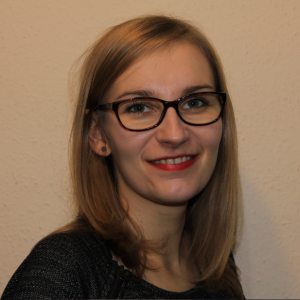2022
Ciężar, Kamila; Pochylski, Mikołaj
2D Short-Time Fourier Transform for local morphological analysis of meibomian gland images Journal Article
In: PLOS ONE, vol. 17, no. 6, pp. e0270473, 2022.
@article{Ciar2022,
title = {2D Short-Time Fourier Transform for local morphological analysis of meibomian gland images},
author = {Kamila Ciężar and Mikołaj Pochylski},
editor = {Michele Madigan},
url = {https://doi.org/10.1371/journal.pone.0270473},
doi = {10.1371/journal.pone.0270473},
year = {2022},
date = {2022-06-01},
urldate = {2022-06-01},
journal = {PLOS ONE},
volume = {17},
number = {6},
pages = {e0270473},
publisher = {Public Library of Science (PLoS)},
keywords = {},
pubstate = {published},
tppubtype = {article}
}
2020
Ciężar, Kamila; Pochylski, Mikołaj
2D fourier transform for global analysis and classification of meibomian gland images Journal Article
In: The Ocular Surface, vol. 18, no. 4, pp. 865–870, 2020.
@article{Ciar2020,
title = {2D fourier transform for global analysis and classification of meibomian gland images},
author = {Kamila Ciężar and Mikołaj Pochylski},
url = {https://doi.org/10.1016/j.jtos.2020.09.005},
doi = {10.1016/j.jtos.2020.09.005},
year = {2020},
date = {2020-10-01},
journal = {The Ocular Surface},
volume = {18},
number = {4},
pages = {865--870},
publisher = {Elsevier BV},
keywords = {},
pubstate = {published},
tppubtype = {article}
}
2017
Krysztofiak, Katarzyna; Ciężar, Kamila; Kościński, Mikołaj
Raman imaging of layered soft contact lenses Journal Article
In: Journal of Applied Biomaterials & Functional Materials, vol. 15, no. 2, pp. 0–0, 2017, ISSN: 2280-8000.
Abstract | Links | BibTeX | Tagi:
@article{Krysztofiak2017,
title = {Raman imaging of layered soft contact lenses},
author = {Katarzyna Krysztofiak and Kamila Ciężar and Mikołaj Kościński},
url = {http://www.ncbi.nlm.nih.gov/pubmed/27791229 http://www.jab-fm.com/article/c1122e89-9243-410f-9c37-1e338fa1ce62},
doi = {10.5301/jabfm.5000329},
issn = {2280-8000},
year = {2017},
date = {2017-04-01},
journal = {Journal of Applied Biomaterials & Functional Materials},
volume = {15},
number = {2},
pages = {0--0},
publisher = {Wichtig Publishing s.r.l.},
abstract = {BACKGROUND Daily disposable contact lenses are gaining in popularity among practitioners and wearers for the improved ocular health and subjective outcomes they offer. Recently a novel daily disposable contact lens material with water gradient technology was introduced. Delefilcon A lenses consist of a 33% water content silicone hydrogel core and an outer hydrogel layer which is totally free of silicone and contains 80% water. METHODS The aim of the present study was to confirm the layered structure of delefilcon A contact lenses. Thickness of hydrogel coating on the silicone hydrogel core was assessed using Raman spectroscopy. To investigate the layered structure of the material, depth spectra of the lenses were recorded. RESULTS The results obtained suggest that at about 6 $mu$m a boundary between the hydrogel layer and silicone hydrogel core exists, which is in good agreement with the manufacturer's data. CONCLUSIONS Data collected in this experiment confirm a water gradient at the delefilcon A lens surface.},
keywords = {},
pubstate = {published},
tppubtype = {article}
}
BACKGROUND Daily disposable contact lenses are gaining in popularity among practitioners and wearers for the improved ocular health and subjective outcomes they offer. Recently a novel daily disposable contact lens material with water gradient technology was introduced. Delefilcon A lenses consist of a 33% water content silicone hydrogel core and an outer hydrogel layer which is totally free of silicone and contains 80% water. METHODS The aim of the present study was to confirm the layered structure of delefilcon A contact lenses. Thickness of hydrogel coating on the silicone hydrogel core was assessed using Raman spectroscopy. To investigate the layered structure of the material, depth spectra of the lenses were recorded. RESULTS The results obtained suggest that at about 6 $mu$m a boundary between the hydrogel layer and silicone hydrogel core exists, which is in good agreement with the manufacturer's data. CONCLUSIONS Data collected in this experiment confirm a water gradient at the delefilcon A lens surface.
